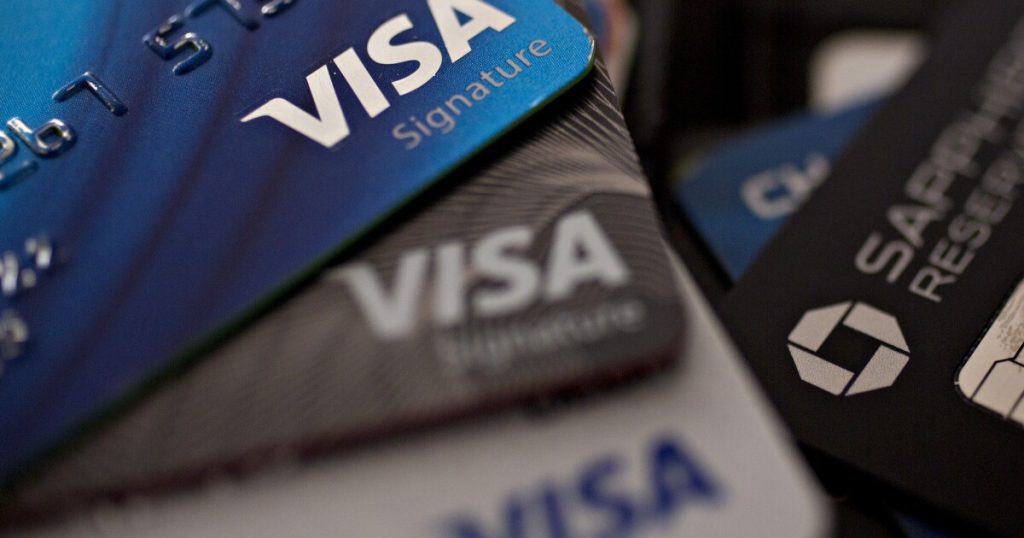Credit cards are a staple of life for many U.S. consumers, but as more small merchants impose surcharges, banks stand to see more credit card revenue disappear.
A recent study by J.D. Power found that 34% of merchants add surcharges for customer purchases with credit cards. Many retail customers — 41% of credit card users — say they decided not to use a card payment method at a large or small business because of a surcharge, the report found.
The card brands don’t like the practice and consumers certainly don’t. However, many banks are taking a hands-off approach for reasons that include consumers’ strong appetite for cards — even with surcharges.
“If surcharging meant that no one would use a credit card, the industry would be lobbying to put an end to it,” said Eric Grover, principal at Intrepid Ventures, a provider of corporate development and strategy consulting to financial services, payment network, and processing businesses.
Right now, the disruption to credit card use is only at the margins, but as the percentage of merchants that surcharge increases, it will be
Here’s what banks need to know about this growing trend.
Most states allow credit card surcharging
Although surcharging credit cards is an annoyance for customers,
“If Walmart were doing it, the industry would be screaming at them from the rafters,” Grover said. “If Joe’s Café is doing it, banks and card networks don’t want to make too much fuss. Everybody wants to be the friend of the small merchant.”
Card brands don’t like surcharging
Card brands allow credit card surcharging, within certain limits, but they
Mastercard’s maximum allowable surcharge is 4% and Visa’s cap is 3%. Limits can be lower, however, depending on state regulations. Card brands also have rules about surcharges not exceeding the cost of acceptance for the credit card.
Credit cards aren’t going away anytime soon
Credit cards are a popular form of payment for many consumers and they have been for many years. Credit card balances, which totaled $1.21 trillion outstanding at the end of December, climbed 7.3% from a year earlier, according to the Federal Reserve Bank of New York’s fourth -quarter household debt and credit report
Even with the rise in surcharging, people will continue to use credit cards because they want to harvest points or carry debt, especially for expensive items, Riley said. “There’s still a benefit to the consumer,” he said.
There are other advantages to credit as well, including fraud and other purchase protections, meaning consumers aren’t likely to dump them entirely.
“The use of credit cards for small purchases like lunch may decline due to surcharges. Still, there are structural reasons protecting credit cards’ utility, such as their advantages for traveling and impulse purchases,” Gates Little, president and chief executive of The Southern Bank Company in Gadsden, Ala., wrote in an email.
The potential for future disruption
Notably, debit and credit cards remain the most popular forms of point-of-sale payment, accepted by 96% of small businesses, followed by digital wallets, cash, check, and buy-now-pay-later, according to J.D. Power. Only 15% of merchants accept cryptocurrency, a notable drop from 20% in 2024, the survey found.
In the future, as new payment types develop and broaden their reach, it may impact credit card use, but for now, there are still many positive factors associated with credit cards for the purchaser, as well as for the merchant, said Beth Robertson, managing director at Keynova Group. It remains to be seen how this will change as other forms of payment take off. “We’re in early stages on some of these alternative payment mechanisms,” she said.
What can be done to ease surcharging confusion
Given that consumers don’t like and are often surprised by credit card surcharges, banks and merchant servicers can play a bigger role in education. Banks can provide guidance to merchants on what’s legal by state, card brand rules and how surcharging might affect sales. They can also advise merchants about best practices, which includes clear disclosures to make consumers aware of the practice, Robertson said. It can be especially vexing at restaurants where consumers don’t realize there’s a surcharge until after they’ve eaten their meal and are ready to pay.
Banks and servicers can also help ensure merchants know that surcharges can’t be tacked on to debit purchases, and they can help consumers understand what’s allowed and what’s not, Robertson said. “This is a subject that’s emerging and an area that consumers would probably be interested in understanding more about.”

